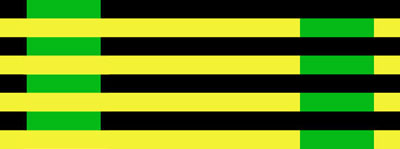Appearances can be deceptive, in particular because the colours we perceive are affected by their surroundings. In the picture below, the two vertical green stripes are precisely the same colour, but most people will see them as being quite different hues. If this seems difficult to believe, try measuring the actual RGB values or viewing the green areas through small holes in a sheet of paper. Similar effects influence perception in everyday life, and whenever colour images are manipulated on a computer monitor.

Another potential problem is known scientifically as metamerism. In general terms, this is the potential for two adjacent objects to appear the same colour under a particular light source, but quite different in other light. The explanation is that slightly different spectral information received by the eye can produce the same response from the cones of the retina. Since the information received is dependent not only upon the nature of the two objects but also upon the unique effect of the prevailing light on each one, a change of light source may result in a perceived change of colour in either object.
Although metamerism might at first sight appear to be the source of unfortunate confusion, it is also indispensable. Without metamerism it would be virtually impossible to print realistically in colour. The fact that different spectral information can produce identical responses in the eye allows yellow to be seen on the screen above. There is actually never any yellow on a computer screen, because all images are constructed from red, green and blue. However the eye responds to the combined red and green spectra in a way that allows the viewer to perceive yellow.
Human perception of colour is more complex and less objective than the response of a machine. This is just one reason why the calibration of a computer's monitor is essential for colour manipulation.






